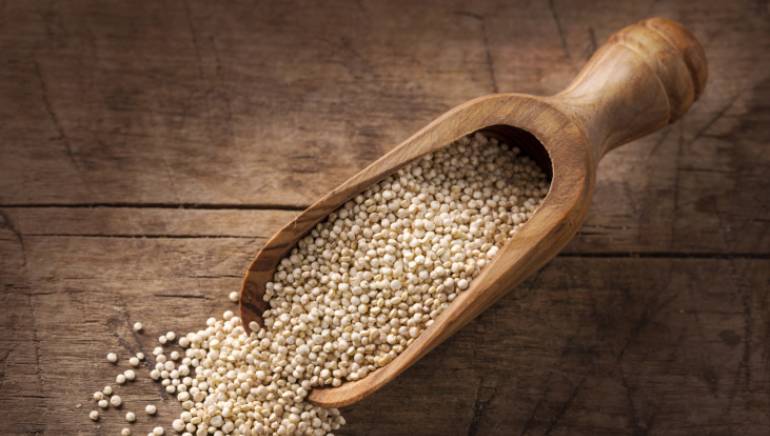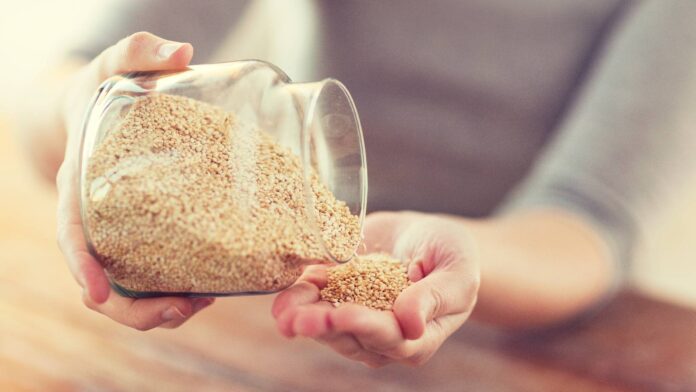How can quinoa benefit your health while also potentially causing constipation and gas? Learn tips for enjoying quinoa without discomfort.
If you are seeking a nutritious addition to your diet, quinoa is a popular option that deserves your attention. This versatile seed has gained tremendous popularity in recent years, often celebrated as a superfood due to its impressive nutritional profile. Packed with high protein content, minerals, and dietary fibre, quinoa is a favourite among health enthusiasts. While it offers numerous health benefits, some individuals may experience gastrointestinal issues related to quiona allergy. A common concern is whether quinoa can cause constipation and gas. Understanding how to add this beneficial food into your diet without discomfort, can help you fully enjoy its advantages.
What is quinoa?
Quinoa (pronounced keen-wah) is often classified as a grain, although it is technically a seed. It is considered a pseudo-cereal because it is cooked and consumed like a grain. Quinoa is gluten-free, rich in protein, and a source of amino acids, making it a beneficial option for individuals following a plant-based diet or those with gluten sensitivities. However, some people may experience digestive issues with quinoa, which can occur due to its high fibre content or saponins, naturally occurring compounds that can irritate the digestive system.
Nutritional value of quinoa
According to the United States Department of Agriculture, here’s the nutritional breakdown of one cup of cooked quinoa:
- Calories: 222
- Protein: 8 grams
- Fat: 3.55 grams
- Carbohydrates: 39 grams
- Fibre: 5 grams
Is quinoa good for you?
While quinoa offers numerous benefits, it can also cause digestive side effects in some individuals. It is often referred to as ‘quinoa digestive issues‘. Common complaints include bloating, gas, and diarrhoea. Chief Dietitian Gulnaaz Shaikh KIMS Hospitals notes, “Many people have visited our hospital with severe stomach pain after consuming quinoa. Often, it was the last meal they had before feeling unwell.”

Health benefits of quinoa
Before we delve into the potential digestive side effects, it is vital to recognise the numerous health benefits quinoa offers:
- High in protein: Quinoa contains approximately 8 grams of protein per cooked cup, making it an excellent substitute for traditional grains, according to the Nutrition Source.
- Rich in fibre: “One cup of cooked quinoa provides about 5 grams of fibre, which is vital for maintaining a healthy digestive system”, explains Dietitian Shaikh.
- Packed with nutrients: Quinoa is rich in vitamins and minerals, including magnesium, iron, B vitamins, and antioxidants, as reported in the journal Antioxidants.
Can quinoa cause constipation?
For some individuals, quinoa can contribute to constipation, one of the digestive issues associated with consuming quinoa. Here’s why:
- Fibre content: While quinoa is high in fibre, not everyone’s digestive system is accustomed to a sudden increase. Suppose you drastically change your diet to include more fibre-rich foods, such as quinoa, without gradually increasing your intake over time. In that case, you might experience constipation, according to The Nutrition Source.
- Lack of hydration: Fibre works best when it’s accompanied by sufficient water intake. If you consume quinoa but don’t hydrate adequately, you may experience constipation.
- Food sensitivities: “Some individuals may be sensitive to quinoa, which can cause digestive discomfort,” says dietitian Gulnaaz. If you consistently experience issues with quinoa, it may be beneficial to consult a healthcare professional for guidance and advice.
Can quinoa cause gas?
Gas is another common issue that many people experience after eating quinoa, which can be part of a broader range of quinoa-related digestive problems. Here are a few reasons:
- Fibre fermentation: As fibre breaks down in the intestines, it is fermented by gut bacteria, producing gas as a byproduct. If your body isn’t accustomed to high-fibre foods, this can lead to increased gas production.
- Saponins: “Quinoa has a natural coating of saponins—a compound that can be bitter and potentially irritating to the gut”, says Dietitian Shaikh. While saponins can be reduced by rinsing quinoa thoroughly before cooking, some individuals may remain sensitive to even trace amounts of saponins.
- FODMAPs: Quinoa is classified as a low-FODMAP food. However, for some individuals with irritable bowel syndrome (IBS), even small amounts can still trigger symptoms, including gas and bloating, as per the National Institute of Diabetes and Digestive and Kidney Diseases.
Tips for eating quinoa
To enjoy quinoa without the uncomfortable side effects, often referred to as quinoa digestive issues, consider these tips:
- Start small: If you’re new to quinoa, begin with a small serving to see how your body reacts. Gradually increase your intake over time.
- Hydrate: Drink plenty of water throughout the day, especially when consuming high-fibre foods like quinoa.
- Timing matters: It’s best to eat quinoa during the day, such as at breakfast or lunch. Your metabolism works more efficiently earlier in the day, aiding digestion, as noted in the journal Nutrients.
- Cook properly: Always rinse quinoa thoroughly before cooking to remove saponins, which can contribute to digestive discomfort.

